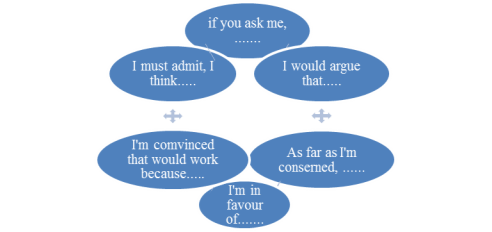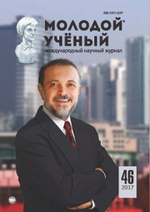The article deals with some problems of speaking and how to overcome its barriers in B2level. The article examines the difficulties connected with choosing the appropriate approach and discusses to input the typical patterns of tasks with the help of modern technologies in the foreign language classroom.
Key words: make a barrier, authentic, autonomous language, recording, a task-based approach, a genre based approach
В статье изучаются проблемы говорения и то, как преодолеть эти барьеры уровня В2. Статья исследует трудности, связанные с выбором подходящего метода и ввода типичных примеров заданий в процессе урока с помощью новых технологий.
Communicative Language Teaching added a more realistic dimension to teaching oral discourse by introducing numerous forms of interaction to the classroom and practicing the language in natural or probable situations which demanded defining of the discourse genre and the roles of participants. Although the contribution of CLT to developing forms of speaking practice in the language classroom can hardly be overestimated, there is a growing tendency among researchers and practitioners to criticize it for its insufficient recognition of the complexity of speaking as a psycholinguistic process and of placing too strong an emphasis on information gap criterion as leading to artificial or impractical tasks [1, 21].
Nowadays, in spite of the inevitable criticism of available methods, techniques or resources, speaking is generally perceived as the most fundamental skill to acquire. Since the onset of the communicative era it has been treated as the ultimate goal of language training and its proper development has become the focus of attention of both teachers and learners. However, it is also a commonly recognized fact that achieving proficiency in foreign language speaking in classroom conditions is not an easy task. Even advanced learners often finish a language course with the conviction that they are not sufficiently prepared for speaking beyond the classroom. This difficulty results basically from the character and inadequate frequency of speaking opportunities in the classroom in comparison to the abundance of natural varieties and genres of oral communication. In fact, selecting the most appropriate types of spoken discourse for classroom practice in a particular language course is a very hard decision which, unfortunately, hardly ever reflects the natural occurrence and distribution of communicative situations.
Moreover, language courses should create optimal conditions for developing learners sociocultural knowledge, that is “the culturally embedded rules of social behavior” [4,31] and their linguistic knowledge, which includes discourse and speech act knowledge, and knowledge of the grammar, vocabulary and phonology of the target language. These knowledge areas must then be appropriately activated in order to be made available for use in regular speaking practice in the classroom and beyond.
Unfortunately this process causes some difficulties even in B2 level because some observed problems in teaching and learning speaking can make a barrier for putting into practice learners’ knowledge. In teaching process there is defined the following problems:
‒ fear of making mistakes, shyness;
‒ to brainstorm for the ideas;
‒ lack of motivation;
In order to settle these kinds of issues we tried to design communication classes more appropriate according to the needs of the learners. Designing a speaking syllabus depends on several factors, the most obvious being the age and level of learners, the learning context and the aim of teaching. First, it must be defined how much emphasis can be given to speaking within a particular course and whether speaking is to be taught separately or integrated with the teaching of other skills and areas of the language. Secondly, it is essential to choose an approach which defines the teaching procedure. The selection between a task-based approach, a genre based one or the combination of both types is the most crucial step in designing the course as it influences all the elements of the learning process in progress. Nevertheless, a modern multi-layered syllabus should specify the target aspects of the speaking skill to be taught, as well as the grammar and vocabulary components. “A genre-based approach focuses on the notion of the communicative situation which centers on a particular spoken genre or genres” [4, 116]. Needless to say, the variety of types of communicative situations is virtually unlimited.
In contrast, a task-based approach stems from the general idea that “a language is best learned through using it, rather than learned and then used” [4,119]. Consequently, it is believed that accuracy results from fluency, in other words the need to communicate effectively leads to the refinement of learning and language. A task-based syllabus, then, takes the form of a sequence of integrated tasks which involve speaking and which reflect the situations that learners are likely to meet in real circumstances. Both approaches have their advantages and drawbacks. The task-based approach has been criticized for giving priority to the process of using language rather than focusing on the language that learners actually produce. The genre-based approach has been considered inadequate as it relies too heavily on imitating models and this is not necessarily the way in which people communicate in real life.
Therefore as a next step we tried to implement simultaneously the task-based approach and genre based one via modern technologies in the teaching process in order to solve the above mentioned problems and improve speaking skills.
The actual teaching procedure starts from establishing the social purpose and cultural context of a given genre, later a typical example is presented and analyzed, finally learners create their own samples of appropriate communicative events [4.121]. As an example of this combination first we gave vocabulary in the context on a particular familiar topic(aboutwork), second language in structure, third listening authentic material, fourth some expressing opinion phrases, and last recording themselves speech in their mobile phones that available for everybody. For example:
I. Complete the sentences using words and phrases in the box
II. Grammar: Speculating. Speculate about the jobs using the useful language given down.
- Listening(My dream job)
- Learn some expressing opinions phrases and say what opinion markers and speculating phrases are used in listening track.

V. Read the questions. Give yourself one minute to plan your answer, making notes if you wish. Think about how you could include some grammar structures as well as some opinion markers. Then record yourself speaking for one to two minutes.
In the light of the above assumptions it may be claimed that ongoing language performance is an extremely significant element in the process of developing speaking skills. In other words, it seems obvious that in order to learn to speak or develop this ability, learners have to speak. Being aware that they have to speak makes learners more attentive to syntax while listening, as a result listening tasks become more effective for interlanguage development and via recording themselves learners can develop their personal voice and rely exclusively on what others say but these are not likely to develop a personal manner of speaking, they are dependent on the meanings they are exposed to and cannot steer conversations, each learner should learn how to meaningfully influence ongoing discourse and find ways of individual expression.
The above approach suggests that frequent and well-planned speaking practice has a great impact on learners’ interlanguage development. And according to Thornbury [4,40], the process of developing speaking skills consists of three stages:
‒ awareness — learners are made aware of features of target language knowledge,
‒ appropriation — these features are integrated into their existing knowledge-base,
‒ autonomy — learners develop the capacity to mobilize these features under real-time conditions without assistance.
It seems that at the advanced level of foreign language proficiency students and teachers’ efforts should be focused on the stage of appropriation and its effective movement towards autonomy in target language use. For that purpose they need a range of speaking tasks as recording their speech that encourage a considerable degree of independence by relying on extensive oral practice (treated as a source of meaningful input and feedback) mainly in the form of student- student interactions. The speaking activities presented below take into account the above assumptions. As:
Conversations in foreign language classrooms are considered to be not the result of language learning but rather the context in which learning actually occurs.
Interviews are demanding tasks in the sense that they require from the interviewer some preparation in the form of research, the selection of relevant questions and the prior analysis of native speaker interviews so as to properly evaluate both the questions and the elicited information. Again mobile phone is very helpful device for recording this kind of activity out of the classroom.
A class survey is a version of a collaborative interview which, if properly carried out, may engage a large group of students in a communicative task based activity. Learners prepare a set of survey-type questions connected with a particular topic and they mill around in the classroom, asking the questions and noting the answers. Next, they return to their original groups to analyze the findings which are later reported to the class by a group spokesperson.
Discussion is another popular and useful form of classroom interaction. However, it must be stressed that the actual potential of this activity for developing an individual learner’s speaking ability can be implemented only under certain conditions.
Academic presentations are particularly useful for learners who study language for academic purposes and need practice in giving presentations or conference papers. This activity should be preceded by discussing the formal features of the genre and analyzing the specific language patterns typical of each stage of an academic presentation. Watching model or authentic presentations before students actually start preparing their own speeches should be treated as an important part of the activity, as well as discussing the effectiveness of individual presentations afterwards.
From our research we defined that developing these kind of activities and three stages especially autonomy in speaking through recording their speech is more effective way to disrupt the communication barriers and for this case we can use fully mobile devices.
To conclude, it must be remembered that each speaking task needs to be productive, purposeful, interactive, challenging, safe and authentic if it is intended to ensure optimal conditions for effective and autonomous language use.
References:
- Dakowska, M., 2005. Teaching English as a Foreign Language.A Guide for Professionals. Warszawa: Wydawnictwo Naukowe PWN.
- Johnson, K.E., 1995. Understanding Communication in Second Language Classrooms. Cambridge: Cambridge University Press.
- Skehan, P., 1998. A Cognitive Approach to Language Learning. Oxford: Oxford University Press.
- Thornbury, S., 2007. How to Teach Speaking. Harlow: Pearson Education Limited.







